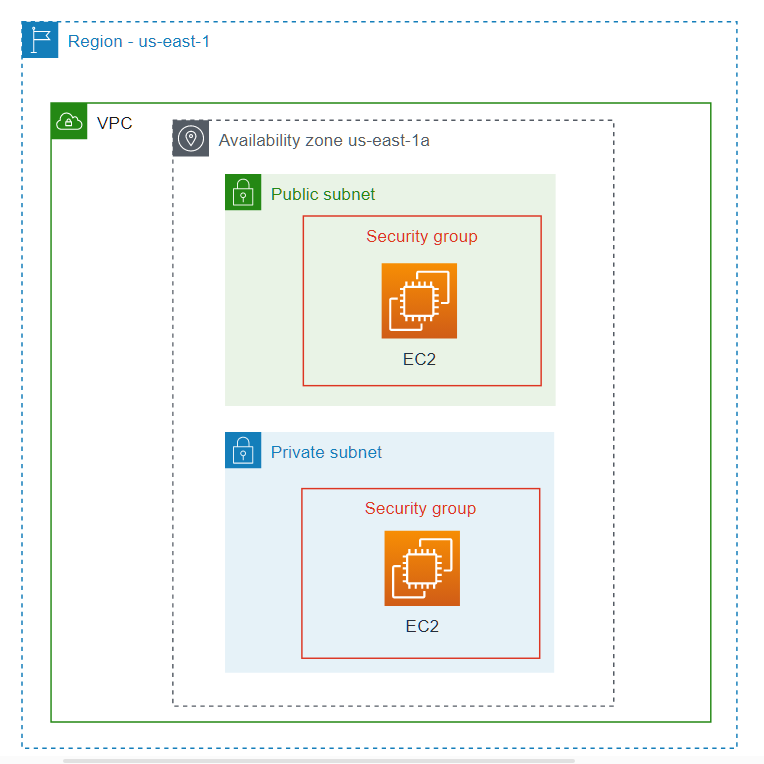AWS Security Group is a virtual firewall that controls inbound and outbound traffic for Amazon Elastic Compute Cloud (EC2) instances and other resources in Amazon Web Services (AWS). It acts as a virtual firewall that regulates traffic based on rules that you define.
Each AWS Security Group is associated with one or more instances, and you can specify the inbound and outbound traffic rules for that group. You can use security groups to allow or deny traffic from specific IP addresses, protocols, or ports. You can also create rules that allow traffic from other security groups, enabling you to control access to different resources within your VPC.
AWS Security Groups are stateful, which means that they allow return traffic by default. When you create a new security group, all inbound traffic is denied by default, and you must specify the inbound traffic rules to allow access to the instance. Outbound traffic is allowed by default, and you can specify the outbound traffic rules to restrict access as needed.
The AWS Security Group architecture is based on a virtual firewall that controls inbound and outbound traffic to and from Amazon Elastic Compute Cloud (EC2) instances and other resources in Amazon Web Services (AWS). Each Security Group acts as a set of firewall rules that can be applied to one or more EC2 instances. The architecture is typically implemented in a VPC (Virtual Private Cloud) environment, which provides a secure and isolated network environment for your AWS resources.

AWS Security Groups can be thought of as virtual “firewalls” that can be customized to restrict traffic to and from specific resources. Each security group can be configured to allow or deny traffic based on a variety of criteria, such as IP address, port, and protocol. In addition, security groups are “stateful”, which means that they automatically allow return traffic from a connection that has been initiated by an authorized request.
The following are some pros and cons of AWS Security Groups
Pros of AWS Security Groups:
-
-
- Easy to Use: AWS Security Groups are easy to create and configure, and they integrate well with other AWS services.
- Scalable: You can easily scale your security groups up or down to accommodate changes in your infrastructure.
- Stateful: AWS Security Groups are stateful, which means that they allow return traffic by default. This simplifies network configuration and reduces the number of rules that you need to manage.
- Granular Control: You can create granular security rules for specific ports, protocols, and IP addresses, giving you fine-grained control over your network traffic.
- Integration with VPC: AWS Security Groups are integrated with Virtual Private Cloud (VPC), which provides an isolated network environment for your resources.
-
Cons of AWS Security Groups:
-
-
- Limited Flexibility: AWS Security Groups may not provide enough flexibility for complex networking requirements or fine-grained access controls.
- Instance-Level Security: AWS Security Groups are associated with instances, which means that you need to create separate security groups for each instance or group of instances that require different rules.
- Limited Visibility: Security Group rules are not easily visible outside of the AWS console or API, which can make it difficult to audit your security configurations.
- Additional Management: Managing multiple security groups can become complex and time-consuming, especially if you have a large infrastructure.
-
Overall, AWS Security Groups provide a flexible and powerful way to control access to your instances and resources in AWS. By defining the rules for inbound and outbound traffic, you can create a secure and scalable infrastructure that meets your specific requirements.
